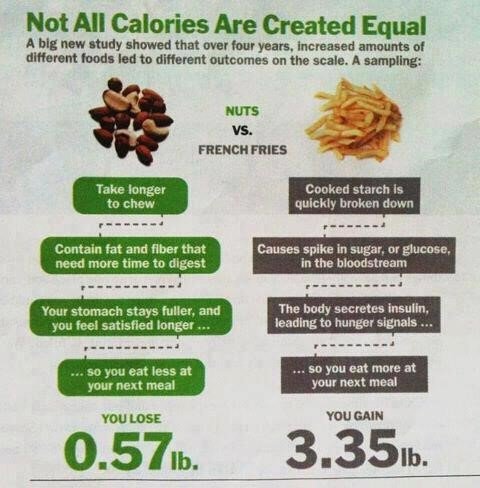Glucose and fructose are both simple sugars but are quite different, and the way our bodies react to them is also quite different. Why does it matter?
SUGAR = GLUCOSE + FRUCTOSE
Most sugars that we are familiar with, for example table sugar or granulated sugar, are a disaccharide—that means they contain both glucose and fructose.
GLUCOSE
Glucose is naturally found in nearly every single food and is a key source of energy for our bodies. Bread, oats, rice, pasta, fruits and vegetables all break down to glucose in our bodies. When someone is referring to ‘blood sugars’, they are referring to glucose.
FRUCTOSE
Fructose is another beast entirely. Unlike glucose, which is found almost everywhere in nature, fructose was once a very rare sugar, only found in tree and vine fruits, some root vegetables and honey. These days, however, we find it everywhere—it’s added to so many foods and our bodies have not evolved fast enough to properly deal with it.
A CALORIE IS NOT A CALORIE
Traditionally, we have been taught that being overweight is an energy imbalance—that a person has consumed more calories than what has been expelled. Therefore, if you eat less calories and exercise more, you’ll lose weight.
However, the body is an intricate and complex system, and how one calorie is absorbed is different from another. We can eat 100 calories of glucose (from almonds) or 100 calories of sugar (half glucose and half fructose, from French fries) and how the body metabolises each will be completely different.
Every cell in the body works to metabolise glucose and starches, while the liver predominately metabolises fructose—that means, your liver is working much harder to break down fructose. The type of fat fructose is transformed into when it enters the bloodstream is fatty acids and triglycerides. This fat can gather around the organs and fatten the liver. And if you’re consuming that fructose via liquid form—e.g. via soft drink or juice—the fructose (and glucose) will hit your liver much quicker than if you ate the equivalent number of apples.
Studies also show that if an intense quantity of fructose hits your liver very quickly (e.g. via liquid form), most of it will be converted to fat. This apparently also induces insulin resistance, which is one of the primary underlying factors in obesity, heart disease and type 2 diabetes.

Resources: Lustig, R. 2017, fx Medicine—BioCeuticals Trade Journal, ‘Under the influence’, vol 84, pp.8-9.
Taubes, G. 2011, The New York Times Magazine, ‘Is Sugar Toxic’, online.
Gameau, D. 2015, Pan Macmillan Australia, ‘That Sugar Book’, pp 88. 115-119.



